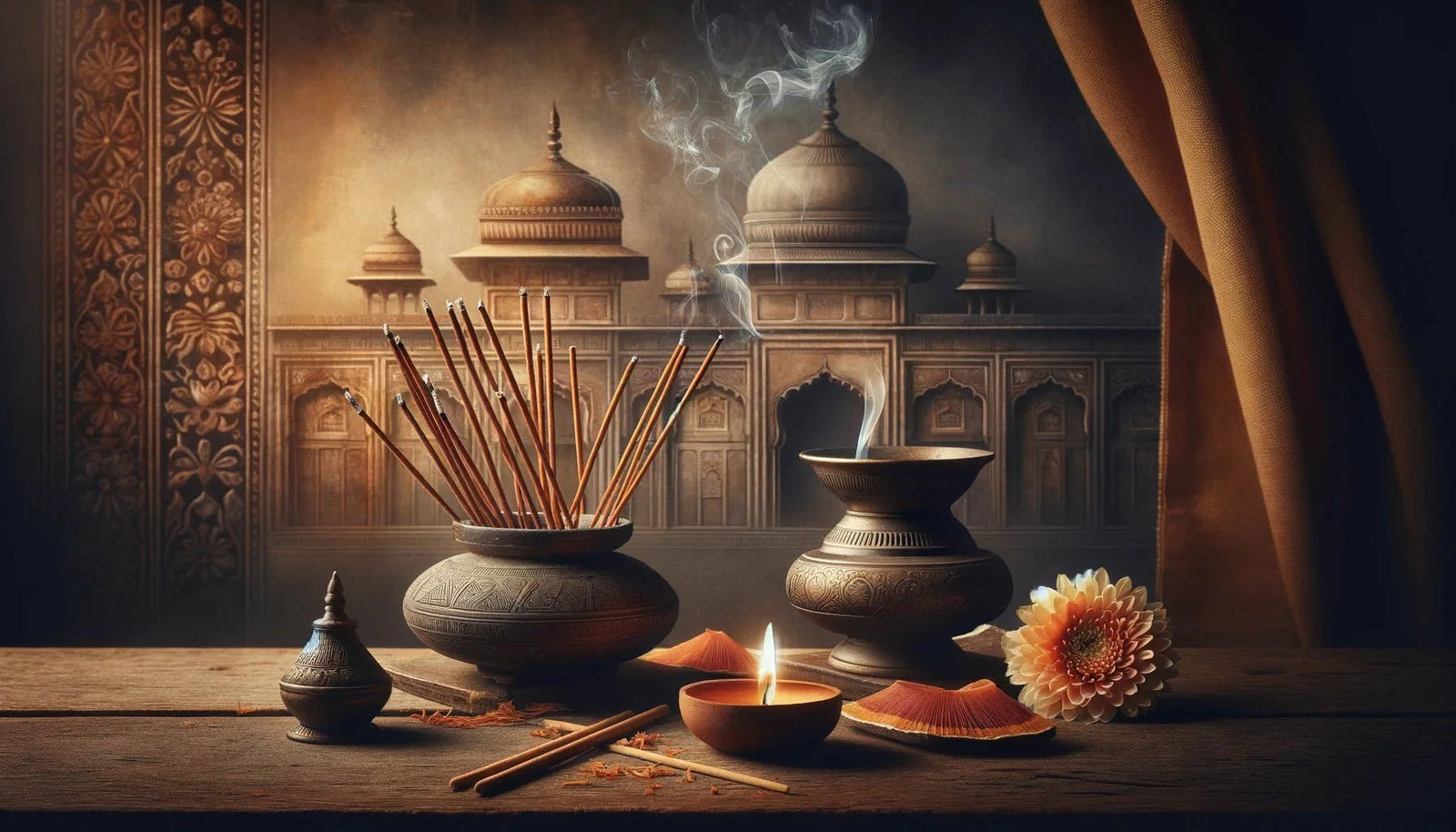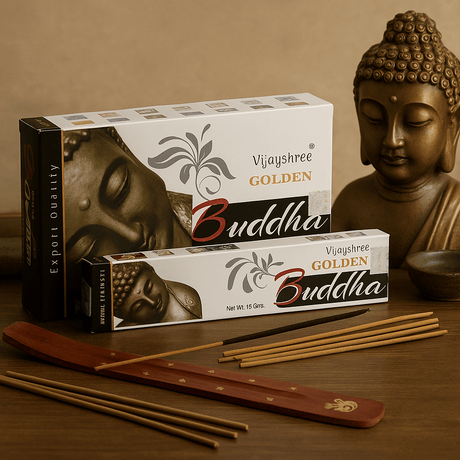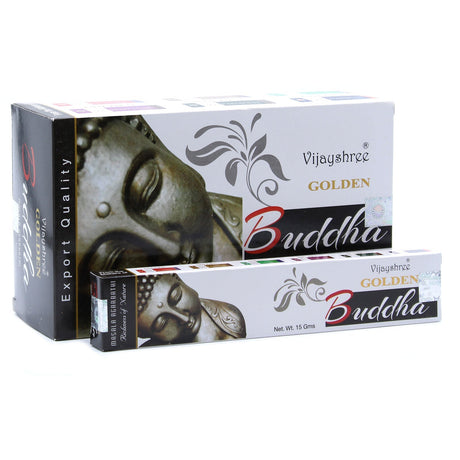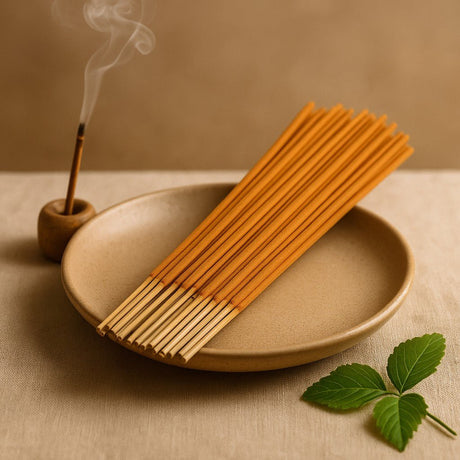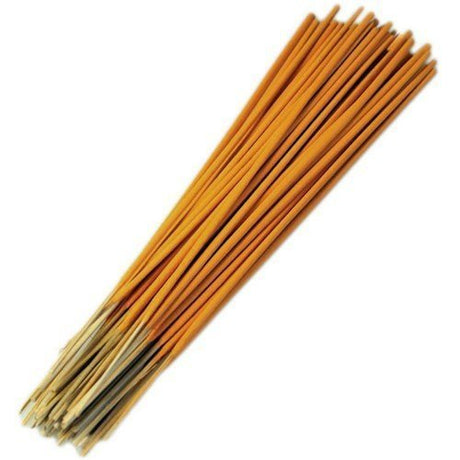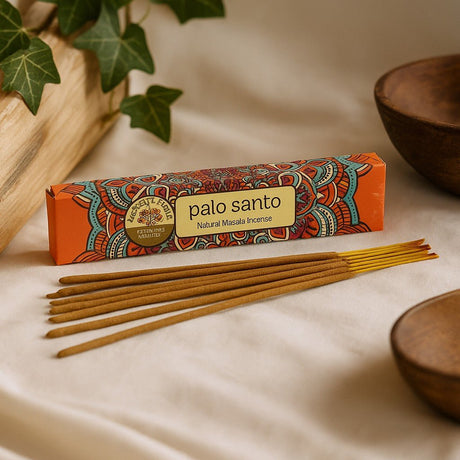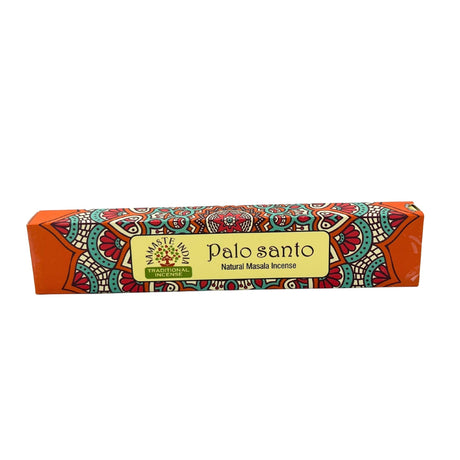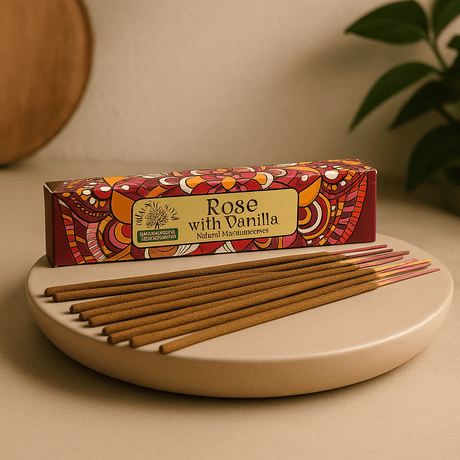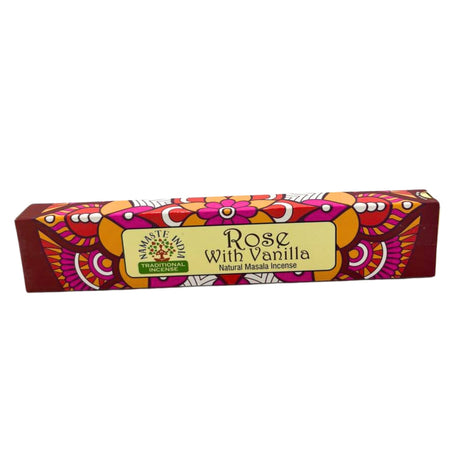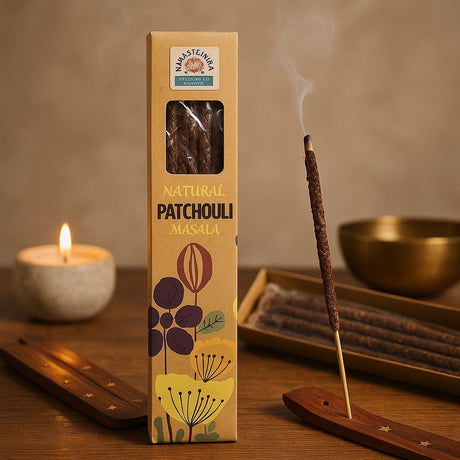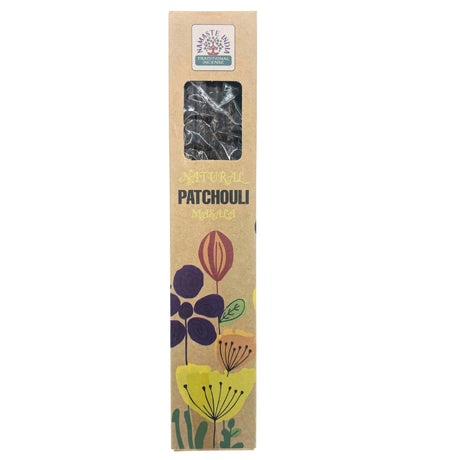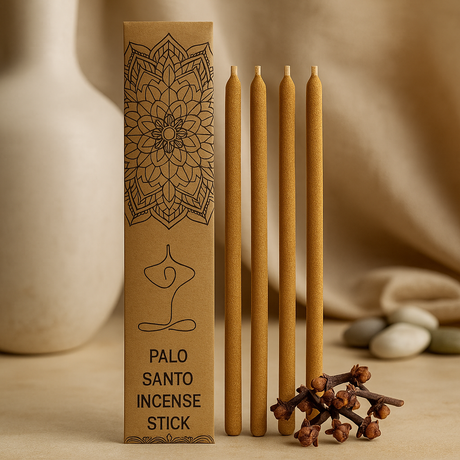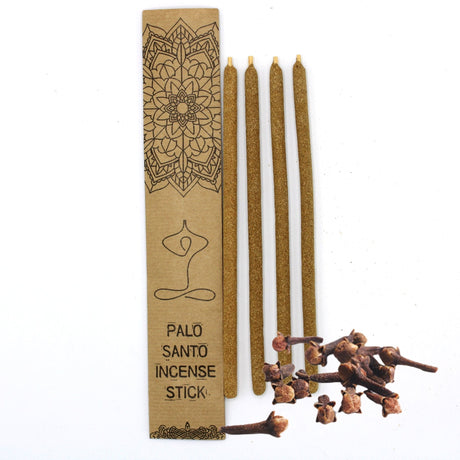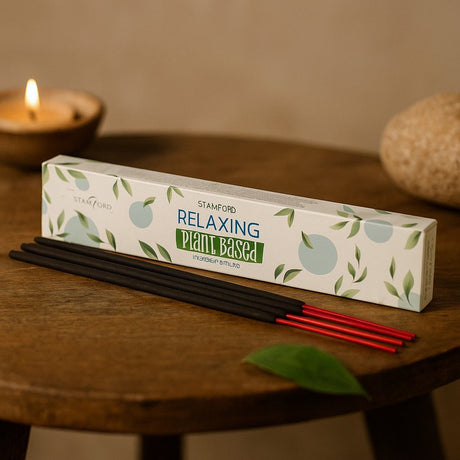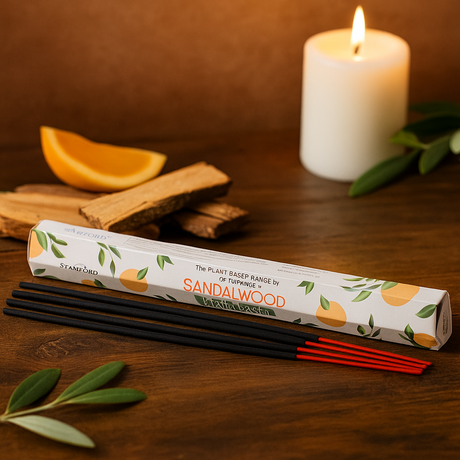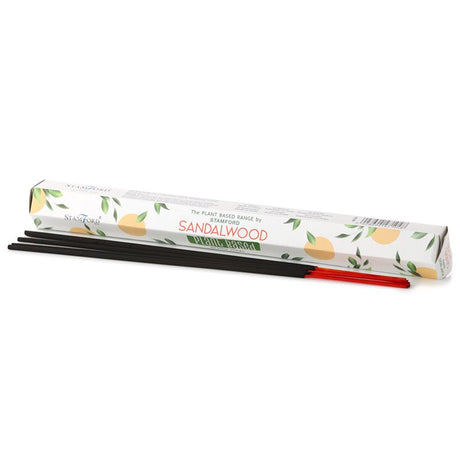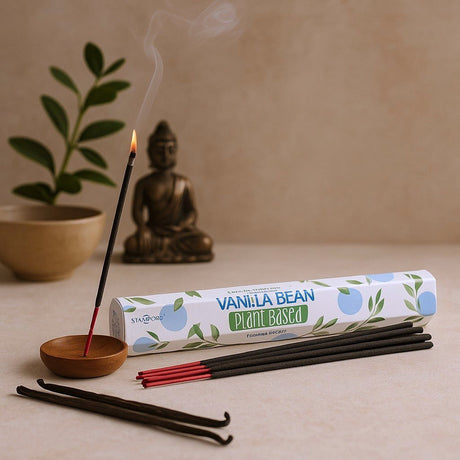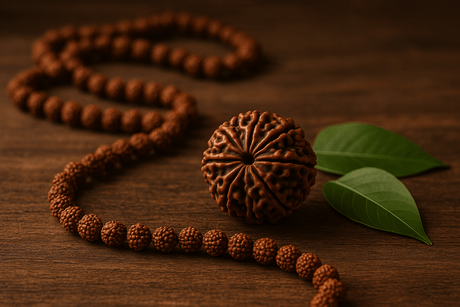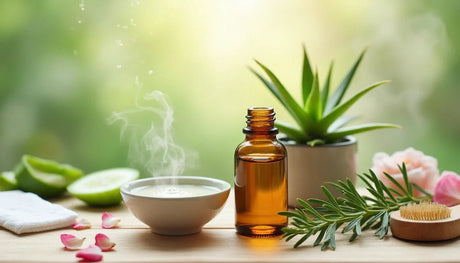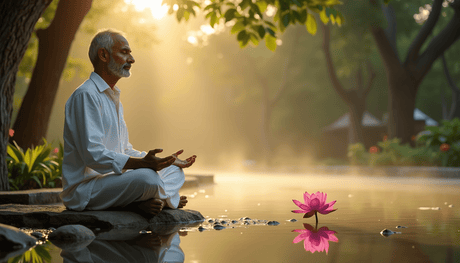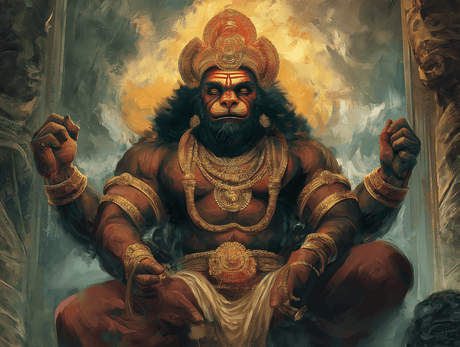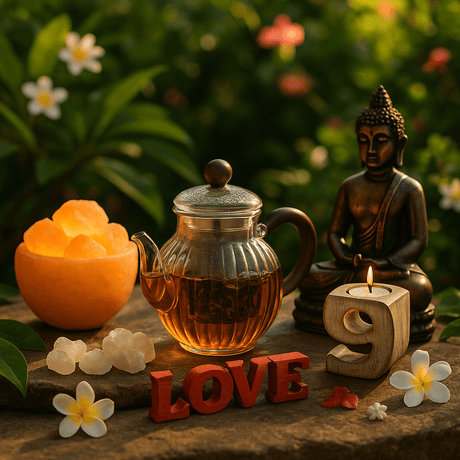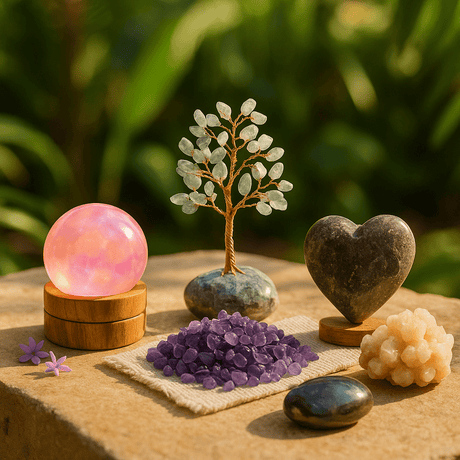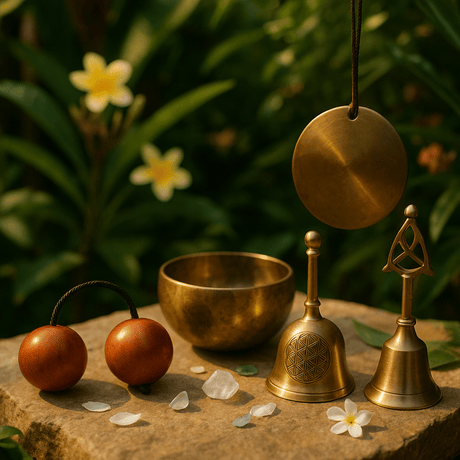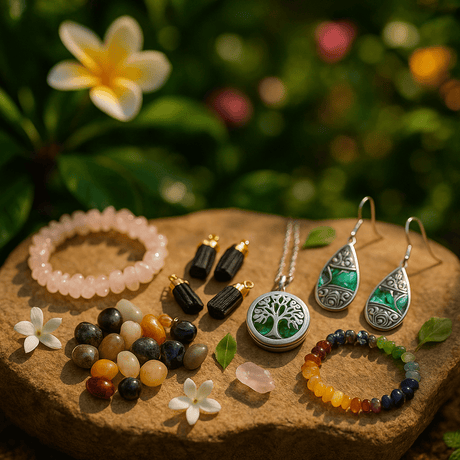India stands as the world's foremost incense-producing nation, a title underscored by its role as a major exporter of incense. The tradition of incense, or Agarbatti, traces back to ancient practices integral to the spiritual and cultural fabric of the region. Rooted deeply within the cottage industry, incense making in India is a revered art form, pivotal to the rituals of Hinduism, Jainism, and Buddhism since time immemorial. The innovation of using a bamboo stick core for incense sticks emerged in India towards the late 19th century, marking a significant evolution from the traditional methods of rolling, extruding, or shaping incense, which continues to be practiced for creating dhoop.
Historical Background
The earliest archaeological evidence of incense use and incense burners in India dates back to the Neolithic and Chalcolithic periods (3300–1300 BCE), with the Vedas — specifically, the Atharva-veda and the Rigveda—providing the oldest textual references. These ancient texts not only mention the use of incense for masking odors and creating pleasurable smells but also suggest a uniform method of making incense closely linked to the Ayurvedic medical system. The Mahabharata delineates incense, or dhupa, into three types based on their ingredients: niryasa (resins), sarin (heartwoods, roots, flowers, and herbs), and kritrima (artificially produced substances like jaggery). This blend of ingredients has formed the basis of incense making since the ancient period.
In the realm of religious worship within Hinduism, Jainism, and Buddhism, dhūpa (incense) and gandhā (perfumes) are esteemed among the five essential accessories, alongside puṣpa (flowers), dīpa (lamp), and nivedya (offering). Utilizing these in worship is considered a means to achieve the four aims of human life: Dharma (duty/ethics), Artha (wealth), Kama (desire), and Moksha (liberation).
The Arthashastra, an ancient Indian treatise on statecraft, economic policy, and military strategy, documented the imposition of a state tax on aromatic substances like agarwood and sandalwood. Moreover, the Kamasutra elaborates on Gandhayukti, the art of perfume blending, highlighting the cultural depth and sophistication of fragrance use in ancient Indian society.
By around 200 CE, the practice of incense making, deeply rooted in the subcontinent's spiritual traditions, was introduced to China by wandering Buddhist monks, signifying the expansive cultural exchange fueled by India's rich tradition of incense.
This historical journey not only underscores the integral role of incense in India's religious and daily life but also its significant impact on global incense traditions, marking India as a pivotal player in the historical and cultural narrative of incense.
Types of Incense 🌺
India's incense traditions boast a diverse array of forms, each with its unique characteristics and uses. From the serene temples to bustling market streets, the fragrances of various incense types permeate the air, offering a glimpse into the country's rich cultural and spiritual heritage. Here, we explore the prominent types of incense integral to Indian traditions: sticks, cones, dhoop, masala sticks, and coils.
1. Sticks. Incense sticks, or Agarbatti, are the most common form of incense in India. These slender sticks consist of a bamboo core coated with a mixture of natural ingredients, such as herbs, flowers, and resins. When lit, they emit a delicate, continuous stream of smoke and fragrance, serving as an essential element in daily rituals, meditation practices, and religious ceremonies.

2. Cones. Incense cones are shaped like small pyramids and made from the same materials as stick incense but without the bamboo core. Cones burn to release a rich and potent aroma, creating a more intense fragrance experience. Due to their shape, they allow for a uniform burn, making them ideal for short, concentrated periods of use in meditation and spiritual practices.
 3. Dhoop. Dhoop is a coreless incense, traditionally made from a blend of powdery, resinous materials. It produces a dense, aromatic smoke when burned, often used in religious ceremonies for its potent scent and purifying properties. Dhoop comes in various forms, including sticks, logs, or even loose powders, and is known for its long-lasting fragrance.
3. Dhoop. Dhoop is a coreless incense, traditionally made from a blend of powdery, resinous materials. It produces a dense, aromatic smoke when burned, often used in religious ceremonies for its potent scent and purifying properties. Dhoop comes in various forms, including sticks, logs, or even loose powders, and is known for its long-lasting fragrance.
 4. Masala Sticks. Masala incense sticks are crafted from a complex mixture of natural ingredients, including dry herbs, spices, resins, and essential oils. This mixture is typically hand-rolled onto a bamboo stick. Unlike the smoother coating of regular agarbatti, masala sticks have a rough texture due to the abundance of aromatic ingredients. They are celebrated for their deep, therapeutic fragrances and are used to enhance spiritual practices and create a calming atmosphere.
4. Masala Sticks. Masala incense sticks are crafted from a complex mixture of natural ingredients, including dry herbs, spices, resins, and essential oils. This mixture is typically hand-rolled onto a bamboo stick. Unlike the smoother coating of regular agarbatti, masala sticks have a rough texture due to the abundance of aromatic ingredients. They are celebrated for their deep, therapeutic fragrances and are used to enhance spiritual practices and create a calming atmosphere.
 5. Coils. Incense coils, less common in India but integral to the broader spectrum of Indian incense traditions, offer a longer burn time compared to sticks and cones. Made from the same natural ingredients, these coils are shaped into spirals that can burn for hours, emitting a consistent, fragrant smoke. They are particularly suited for extended periods of worship, meditation, or for aromatically enriching a space without the need for frequent replacement.
5. Coils. Incense coils, less common in India but integral to the broader spectrum of Indian incense traditions, offer a longer burn time compared to sticks and cones. Made from the same natural ingredients, these coils are shaped into spirals that can burn for hours, emitting a consistent, fragrant smoke. They are particularly suited for extended periods of worship, meditation, or for aromatically enriching a space without the need for frequent replacement.

Incense Making Process 🍂
Crafting incense in India is an art that intricately blends tradition with the natural bounty of the land, guided by age-old Ayurvedic wisdom. The process can be divided into several key steps, each critical to creating the aromatic sticks that are a staple in rituals and households alike.
Core Components:
- Bamboo Sticks. Serve as the skeleton of the incense stick.
- Base Paste. A mixture of charcoal dust or sawdust with joss/jiggit/gum/tabu powder, acting as an adhesive. This powder is derived from the bark of the Bollywood Litsea Glutinosa and other trees.
- Fragrance. Originally a masala (a blend of ground ingredients), now often a solvent containing perfumes and/or essential oils.
Steps in the Process:
- Coating the Bamboo. The bamboo stick is coated with the base paste, forming the foundation for the incense.
- Rolling. While still moist, the coated stick is rolled in fine wood powder, ensuring an even layer that will catch fire easily.
- Drying. The sticks are then left to dry for several days, solidifying the incense into its final form.
- Scenting. Optionally, the dried sticks may be dipped into a scented solvent to imbue them with a specific fragrance.
Ayurvedic Ingredient Classification:
- Ether (Fruits). Citrus medica, Piper cubeba - offering refreshing and uplifting aromas.
- Water (Stems and Branches). Sandalwood, Aloeswood, Cedar wood - known for their calming and grounding effects.
- Earth (Roots). Turmeric, Vetiver, Ginger - adding warmth and stability.
- Fire (Flowers). Clove - purifying and protective.
- Air (Leaves). Patchouli - soothing and harmonizing.
Special Ingredients:
- Resins. Amber, Myrrh, Frankincense, and particularly Halmaddi, are used for their fragrant properties and as binding agents. Halmaddi, notable for its role in popular incense like Satya Nag Champa, is a resin from the Ailanthus triphysa tree, valued for its distinctive fragrance and viscosity.
Conservation Note:
- The use of Halmaddi has faced challenges due to conservation efforts and regulation of resin extraction, affecting its availability and use in incense production. However, measures have been taken to allow controlled extraction, balancing tradition with environmental stewardship.

The Aromatic Guide 🌿
The diversity of ingredients used in Indian incense reflects the country's rich botanical wealth and the deep-seated Ayurvedic knowledge. Each class of ingredients—ranging from the earthy roots of turmeric and vetiver to the ethereal blooms of clove—brings its unique healing properties to the incense:
- Ether (Fruits) such as citrus medica and piper cubeba offer refreshing and invigorating fragrances.
- Water (Stems and Branches) including sandalwood and cedar wood, provide grounding and calming aromas.
- Earth (Roots) like turmeric and ginger, are valued for their warming and stabilizing scents.
- Fire (Flowers) notably clove, evoke a sense of purification and protection.
- Air (Leaves) such as patchouli, impart a soothing and harmonizing fragrance.
These ingredients, alongside the aromatic resins like frankincense and myrrh, form the cornerstone of India's aromatic palette, each contributing to the holistic experience of incense burning. Whether used for spiritual purification, psychological well-being, or simply for their pleasant aromas, Indian incense offers a sensory journey into the heart of its rich cultural and spiritual traditions.

Cultural and Spiritual Significance 🕌
Incense in Hindu rituals transcends mere practicality, becoming a profound symbol that permeates many aspects of spiritual life. The act of lighting an incense stick, or 'agarbatti' as it is known locally, is steeped in symbolism. It stands for the element of fire, one of the five essential elements, and its smoke represents the ether, carrying prayers and intentions to the heavens.
In Hindu temples and homes, incense is commonly used during 'puja' ceremonies, a form of worship that involves offering light, water, flowers, and incense to deities. The sweet fragrance of the incense is said to attract the deities and please them. It is believed that the gods bestow their blessings through the presence of the divine aroma. This act of offering is called 'naivedya', which symbolizes the element of space and is an essential part of the ritual.
The lighting of 'Dhoop' during 'Aarti', a devotional hymn sung in praise of the deity, is another significant ritual. The incense is passed around the deity or the person being honored, and then to the attendees, so they may receive the blessings infused within the smoke.
Furthermore, specific scents are associated with particular deities and are used to honor them. For instance, sandalwood is offered to Lord Shiva, while Lord Krishna is worshipped with 'champaka' (magnolia). This association extends to festivals and religious days, where particular scents are chosen to align with the energies of the occasion.
In the broader spiritual practices within Hinduism, such as meditation and yoga, the use of incense is integral. It aids in creating a tranquil environment, allowing for a deeper state of contemplation and connection with the divine. The aromatic substances used in incense are chosen for their ability to promote mental clarity, reduce stress, and elevate the spirit.
Incorporating the principles of Ayurveda, incense burning is also thought to balance the three doshas — Vata, Pitta, and Kapha — harmonizing the body's energies. Ayurvedic incense is crafted with herbs, resins, and oils that are believed to have medicinal and therapeutic effects, enhancing physical and emotional well-being.
Thus, the use of incense in Hindu rituals is not only about creating a fragrant atmosphere but is an act rich in spiritual symbolism. It represents a selfless offering and a means to sanctify the environment, facilitating a connection between the temporal and the divine.
Beyond its role in rituals, incense holds profound psychological benefits. Its aroma is believed to possess healing powers, soothing the mind and facilitating deeper concentration during prayers and meditation. This calming effect underscores the spiritual significance of incense in Hindu practices, where it is used not only in ceremonies but also as a daily air freshener, integrating the sacred into everyday life.
Conclusion 🌼
The tradition of Indian incense is a vibrant thread in the fabric of India's spiritual and cultural life, embodying the essence of devotion and the pursuit of well-being. Its rich history, diverse forms, and profound significance continue to enchant and inspire, bridging the mundane and the divine.
At SHAMTAM, we invite you to explore the aromatic world of Indian incense, offering a selection that caters to every preference and purpose. Whether you seek to enhance your spiritual practice, enrich your home with exquisite fragrances, or explore the therapeutic benefits of natural aromas, our collection promises to elevate your experience. Discover the perfect scent to harmonize your space and spirit, and let the ancient art of Indian incense infuse your life with its timeless beauty and serenity.
